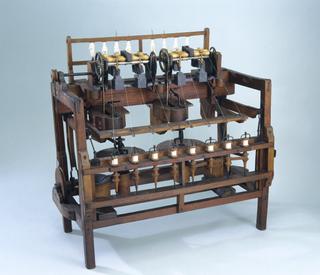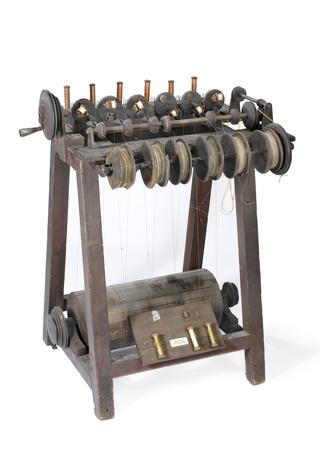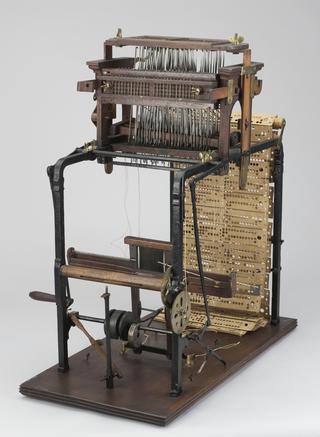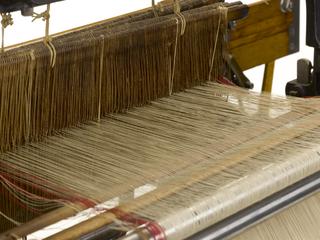
Model of a hand loom for weaving fishing nets (scale 1:4)
- Made:
- 1806 in United Kingdom
- maker:
- John Robertson
Model of a hand loom for weaving fishing nets (scale 1:4), invented J. Robertson., United Kingdom, 1806.
This machine received considerable attention when it was invented. The model only makes a row of five meshes, but the actual looms were to be 3.5 ft. wide and to make 33 meshes in this width; the length of the net was unlimited. The loom has a series of warp threads, each passing through a separate curved tube carried on a swinging frame, while across the framing extends a race in which is a like number of mounted bobbins or shuttles which are simultaneously moved sideways by a handle. At the back is a swinging and sliding frame containing a series of hooks which is so manipulated by the operator as to crochet a knot in each of the warp threads, and through these knots the shuttle threads are passed.
Details
- Category:
- Textiles Machinery
- Object Number:
- 1867-49
- Measurements:
-
overall: 340 x 340 x 340 mm
- credit:
- Royal Society of Arts




